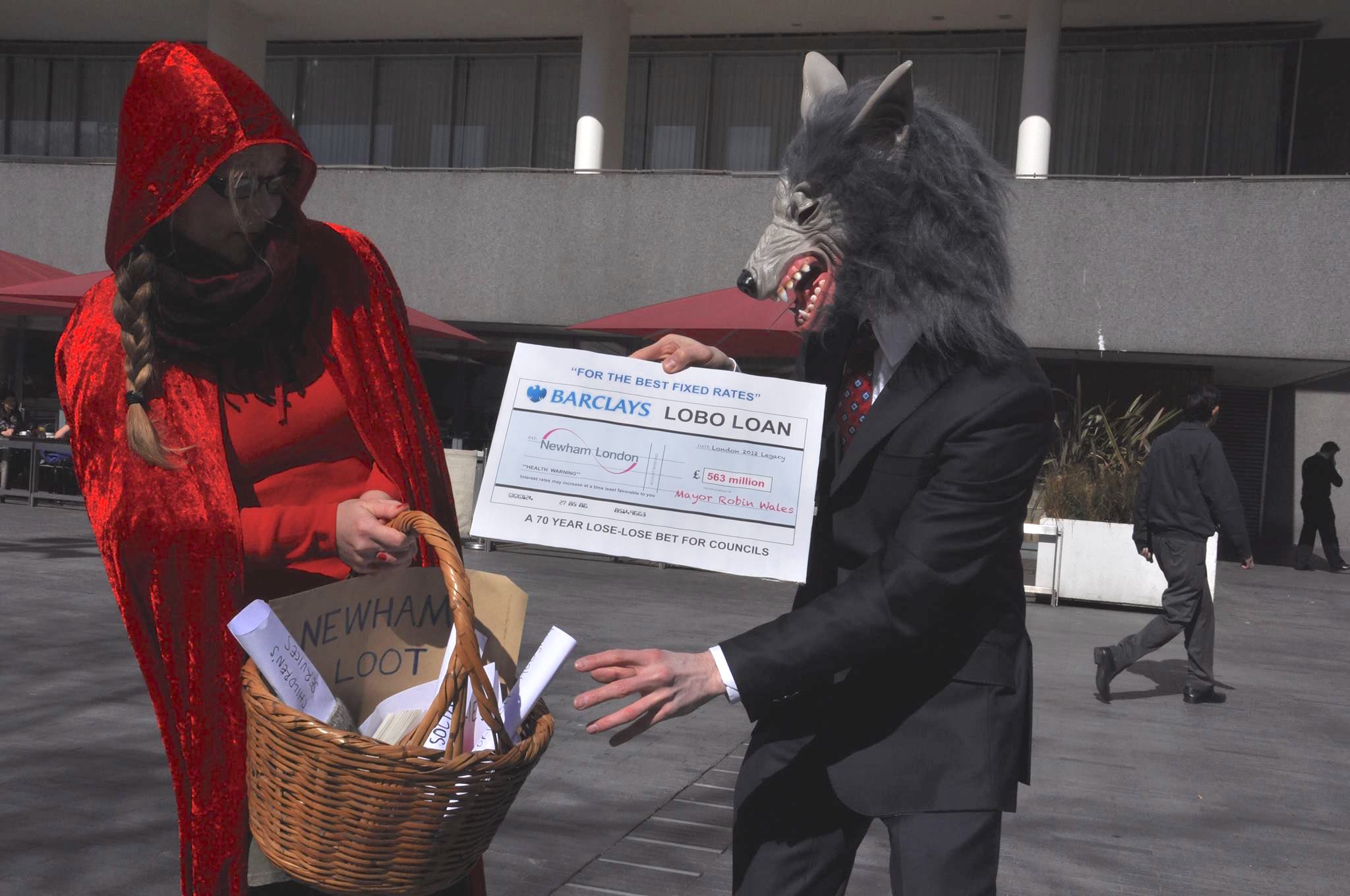Research for Action is developing a citizen debt audit in the London Borough of Newham, building on the investigation by Debt Resistance UK into bank lending to local authorities in the form of risky and expensive long-term loans called LOBOs. You can find out more about LOBOs from DRUK’s Local Authority Debt Audit website. Here are the basics.
What is a LOBO loan?
LOBO is a long-term loan, typically 40-70 years. The acronym stands for “Lender Option Borrower Option”. The lender’s (bank’s) option is to change the interest rate at pre-agreed call dates (e.g. once or twice a year). The borrower (the council) can then repay the loan in full or agree to the new interest rate. The borrower can only use their option when the lender uses theirs. Should the council want to exit the loan on any other occasion they will have to pay breakage fees at the discretion of the bank.
Are LOBO loans the only way Councils can borrow?
No. Councils can borrow from any willing lender. Most councils borrow from central government via the Public Works Loan Board (PWLB) which provides both fixed and variable rate long-term loans. LOBO loans are products developed by banks to compete with the PWLB loans.
What are the interest rates on LOBOs?
At the start of the loan, LOBOs often have a “teaser rate” that undercuts the (PWLB) rate, making them more attractive to councils. After the initial period the rate rises automatically and tends to be above PWLB rates. Some LOBO loans currently have interest rates as high as 11%.
Are LOBO loans cheaper than loans from the Public Works Loan Board (PWLB)?
No. Even when comparing a LOBO loan with a PWLB loan at the same rate, LOBO loans will in the majority of cases be more expensive due to the fact that they contain derivatives. An indication of what the cost of a LOBO loan will be for a council over its lifetime can be given by the breakage cost, as this is what the bank will have booked as profit on the day it sold the loan. Breakage costs on LOBO loans can be as high as 90% of the loan principal.
How many councils have LOBOs?
At least 240 councils across the UK have taken out LOBOs worth a total of £15bn.
Why did councils take these loans?
LOBOs contain derivatives and their pricing is so complex it is hard to think councils fully understood the deals they were entering. Teaser rates and lower interest rates on longer term loans than the PWLB loans made the LOBOs erroneously appear more attractive. Only with sophisticated pricing tools that the council did not have access to would it have been possible to know the full cost of LOBOs over the lifetime of the loans.
Many local authorities hire external Treasury Management Advisers (TMAs) to give them financial advice on such complex issues. Debt Resistance UK has found significant conflicts of interest between the TMAs and the companies that brokered LOBOs, making the independence of advice on LOBO loans highly questionable.
Who sold the councils LOBOs?
The biggest banks selling LOBOs were Barclays, Dexia, Depfa and RBS.
Who were the brokers for LOBO loans?
Mainly ICAP and Tullett Prebon.
Who were the TMA companies advising on the loans?
CAPITA and Sector Treasury Services (a subsidiary of ICAP).
Why focus on Newham’s LOBOs?
Up to 2017, Newham Council was the largest LOBO borrower with £563m worth of these loan instruments. The council currently spends £51m a year in interest payments on its long term borrowing – equivalent of 77% of what it collects as income from council tax. Newham is also one of the poorest boroughs in the UK where 43% of children grow up in poverty, and it is facing major cuts in funding from central government. The borough is thus a prime example of why it is unjust for councils to prioritise interest payments over public spending on residents’ rights.


